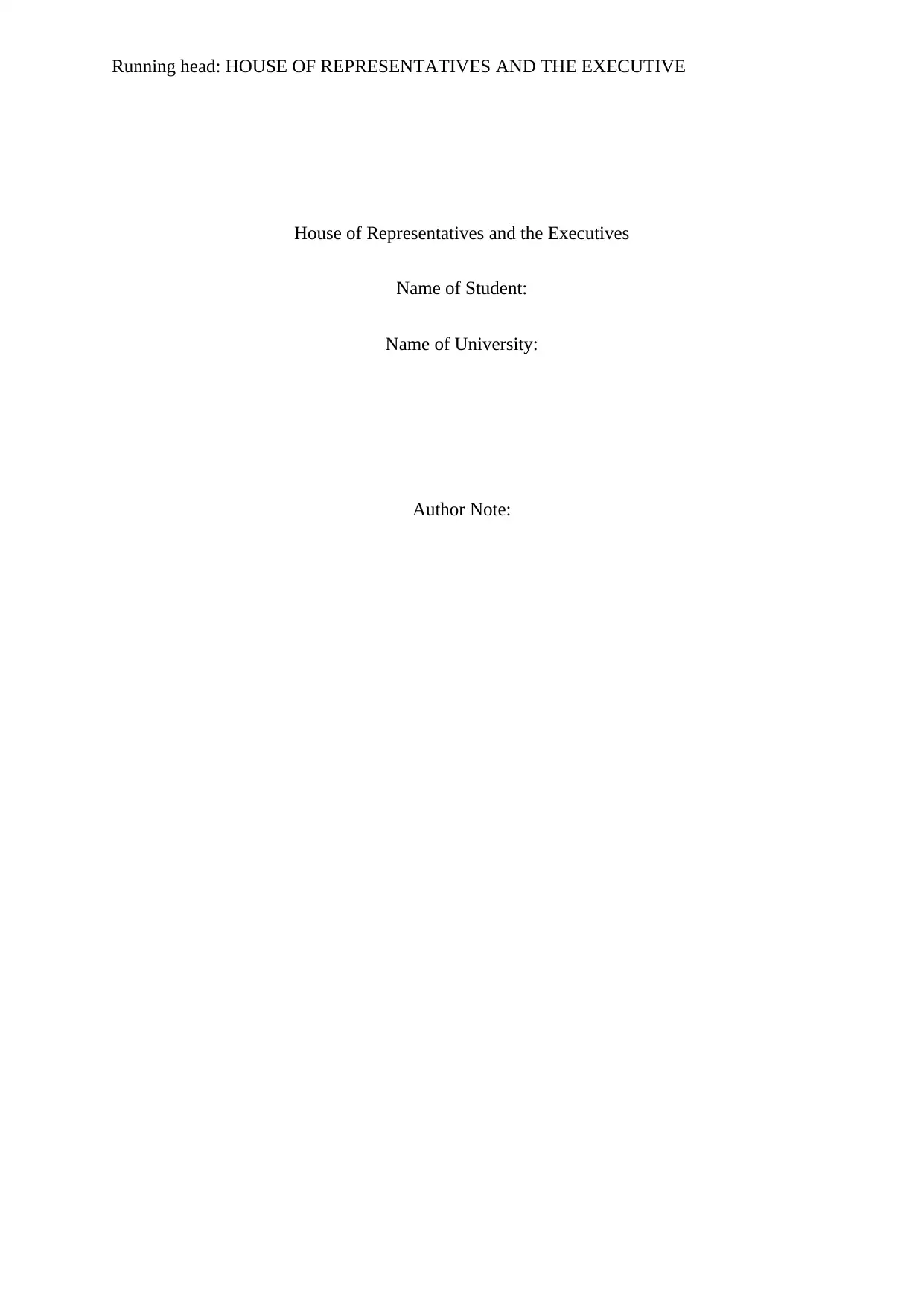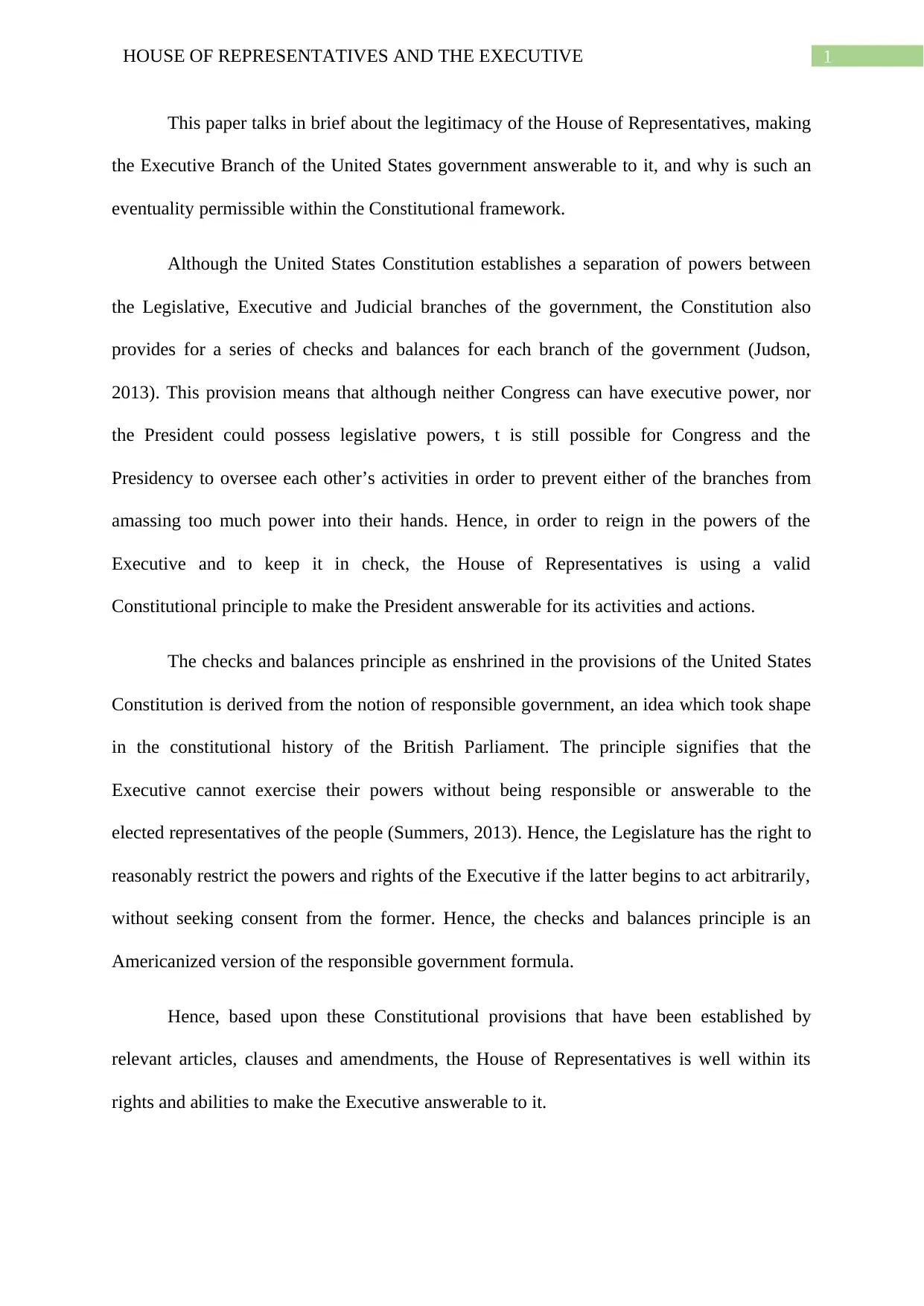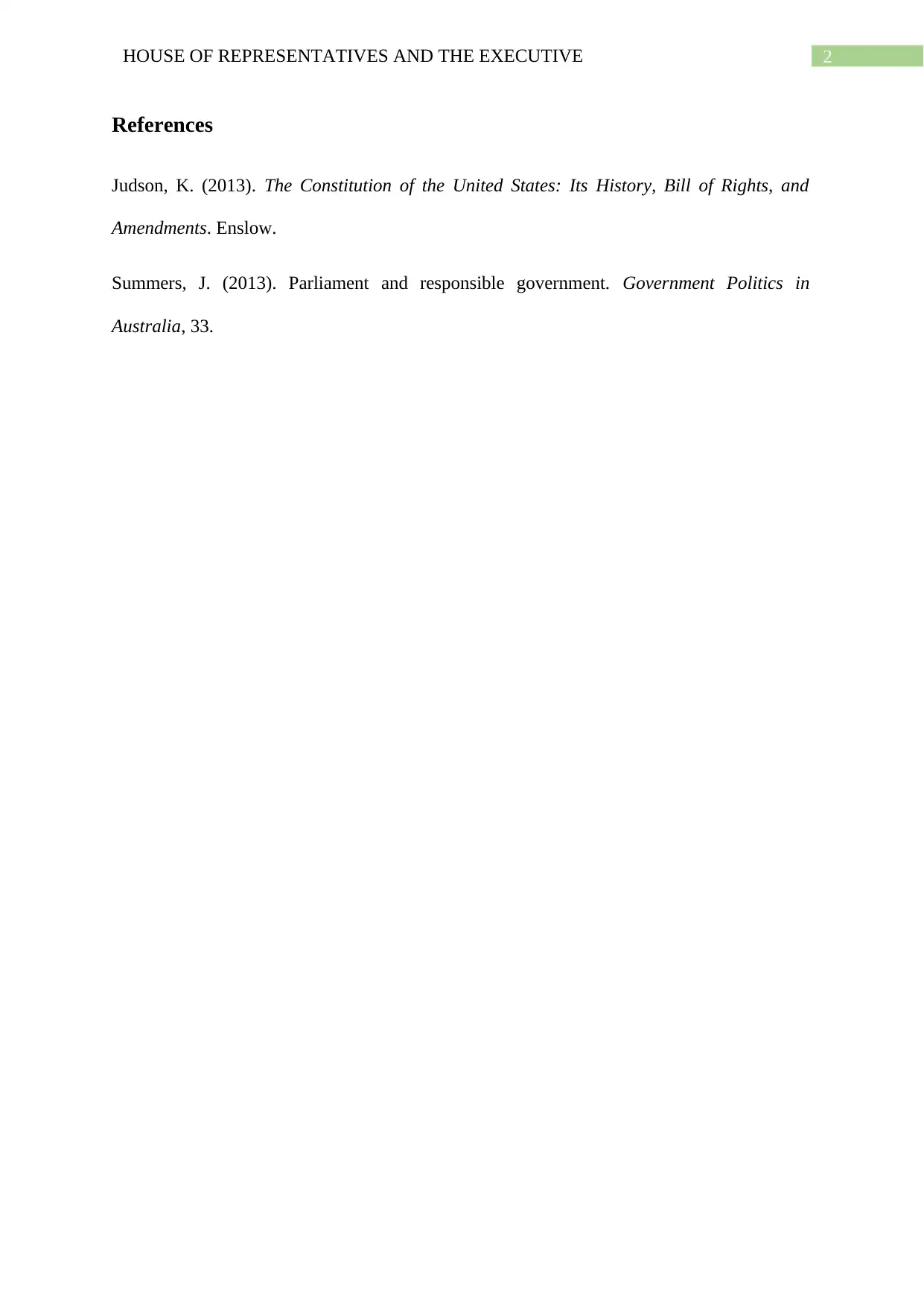House of Representatives and the Executive: Power Dynamics Examined
VerifiedAdded on 2022/09/11
|3
|418
|28
Report
AI Summary
This report delves into the intricate relationship between the House of Representatives and the Executive Branch of the United States government, focusing on the Constitutional framework that governs their interactions. It explores the principle of checks and balances, emphasizing how the House of Representatives can hold the Executive accountable for its actions. Drawing upon the concept of responsible government, the report highlights the Legislature's right to oversee the Executive's activities, ensuring that power is not misused. The report references the Constitution, its amendments, and relevant literature to support its arguments, ultimately illustrating how the House of Representatives operates within its Constitutional rights to maintain a balance of power.
1 out of 3










![[object Object]](/_next/static/media/star-bottom.7253800d.svg)